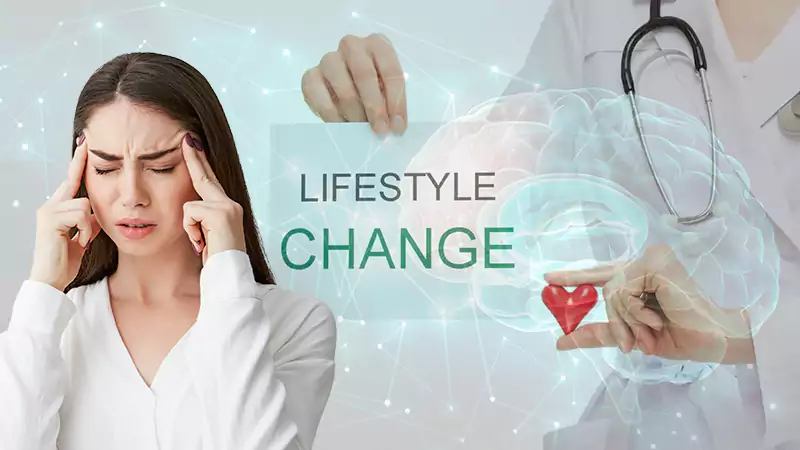What are the Symptoms of Vascular Problems?
Vascular diseases impact your blood vessel network, including arteries and veins. This network is also known as the circulatory or vascular system. They affect blood flow, which harms other parts of your body. Vascular diseases may be caused by blood clots, inflammation, or genetic conditions due to issues in your veins, arteries, or vessels that carry lymph. They can also lead to Ischemia or, in worse conditions, even death. Vascular diseases may have various symptoms, including chronic pelvic pain. You can get the best treatment for chronic pelvic pain at Center for Vascular Medicine. It is important to watch out for symptoms and get your condition diagnosed before it gets too severe.
Symptoms of Vascular Diseases
There are several types of vascular diseases with different symptoms. Given below are common symptoms by disease type:
Peripheral Artery Disease (PAD)
PAD is caused when your peripheral arteries have a buildup of cholesterol deposits and fat in them. This buildup narrows the artery over time. This narrowed artery will impact blood flow, leading to the inadequate blood supply to your body’s tissues. Common peripheral artery diseases and their symptoms include:
Intestinal Ischemic Disorder: Nausea, severe stomach pain, fear of food, diarrhea, vomiting, and weight loss.
Renal Artery Disease: High BP, abnormal kidney function, and congestive heart failure
Popliteal Entrapment Syndrome: Cramps in the foot and legs, tingling sensations, numbness, and redness.
Raynaud’s Phenomenon: Red, blue, or white fingers and toes, tingling, and throbbing pain.
Buerger’s Disease: Arm, hands, legs, and feet pain, blue or pale toes and fingers.
Carotid Artery Issues
Carotid Artery issues occur in the two main carotid arteries in your neck. Common symptoms include:
Carotid Artery Disease: In most cases, you will not see any symptoms of this condition till you suffer a stroke or transient ischemic attack. However, when symptoms do appear, they include confusion, troubled speech, and difficulty remembering things.
Carotid Body Tumors: High BP, headaches, palpitations, and sweating.
Carotid Artery Dissection: Neck pain, headaches, and facial or eye pain
Carotid Artery Aneurysm: Transient Ischemic Attack or stroke
Venous Disease
The venous disease occurs when the valves in your veins become damaged. As a result, the blood flows in both directions. The valves in the damaged veins won’t be able to hold back the blood when your muscles relax, leading to swelling in your veins. Common symptoms include:
Varicose and Spider Veins: Swelling, blue or red veins visible on the legs, and pain.
Klippel Trenaunay Syndrome: Heaviness or pain in the arm or leg.
May-Thurner Syndrome: Tenderness, swelling, leg pain, red or discolored skin.
Thoracic Outlet Syndrome: Shoulder, neck, and arm pain, numbness in the hand or arm, and a tingling sensation.
Chronic Venous Insufficiency: Achy and heavy legs, cramps, swelling in the legs.
Blood Clots
Blood clots are another common type of vascular tissue. The clot forms when the blood coagulates into a jelly-like mass. The blood clot can move through the bloodstream, causing deep vein thrombosis, a heart attack, a pulmonary embolism, or stroke. Common blood clot-related vascular issues include:
The hypercoagulable States Or Blood Clotting Disorders: Pulmonary embolism and deep vein thrombosis
Pulmonary Embolism: Chest pain, coughing up blood, shortness of breath
Deep Vein Thrombosis: Swelling, pain, red skin, and warm feeling in the leg.
Axillo Subclavian Vein Thrombosis: Pain or heaviness in the arm, swelling, and blue colored skin
Superficial Thrombophlebitis: Feeling of warmth around the vein, heaviness, swelling, and red skin
Aortic Aneurysm
An abnormal swelling in a blood vessel wall is called an aneurysm. Aneurysms can form in any blood vessel. They most commonly occur in the aorta, the main blood vessel from the heart. Common aneurysms include:
Thoracic Aortic Aneurysm: False heart rate, chest pain, swollen neck, and trouble swallowing.
Abdominal Aortic Aneurysm: Nausea, dizziness, abdominal or back pain, vomiting, false heart rate if the aneurysm ruptures.
Also Read: Benefits and Side Effects of Alfalfa
Causes of Vascular Diseases
The cause of some vascular issues is not known. However, some other vascular issues are caused due to lifestyle habits and other conditions, including:
- High BP
- High Cholesterol
- Diabetes
- Tobacco Products and smoking
- Infection
- Blood clots
- Certain medicines
- Injury
Some conditions could be genetic as well.
Vascular issues are serious and should not be ignored. Contact a medical center specializing in vascular medicine like the Center for Vascular Medicine if you think you are suffering from a vascular issue. They offer treatments for various vascular problems, including Pelvic Congestion Syndrome, Peripheral Artery Disease, Deep Vein Thrombosis, and Chronic Venous Insufficiency.
Follow Us
Latest Post
















